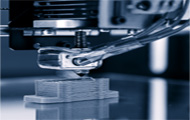 Resolution is often associated with televisions, camera lenses and smartphones. Even the human eye has resolution. Today, resolution is also used in 3D printing.
Resolution is often associated with televisions, camera lenses and smartphones. Even the human eye has resolution. Today, resolution is also used in 3D printing.
Resolution is one of the core features to consider especially when evaluating the quality of a 3D model. It is also important to know how 3D printing resolution affects the overall appearance and precision of the 3D printed parts.
To better understand 3d printing resolution, here is an informative blog post on 3 crucial things to know about 3D printing resolution. Read on here.
1. What is 3D printing resolution
Simply put, 3d printing resolution is a sign or indication on how accurate a 3D printer can print. It is also defined as the quality of the 3D printed part. It is described in 3 different dimensions. These are X, Y and Z dimensions.
- Horizontal resolution (XY) – this resolution is also called planar dimension. It is the smallest movement that a 3D printer laser can make within a single layer. The smaller the movement of the laser, the better the details of the 3D model.
- Vertical resolution (Z) – it is the layer height or layer thickness. Smaller layer height means it has high resolution.
Resolution can be defined as the X-Y dimensions and layer thickness in micrometres (µm) or dots per inch. Micrometre is a unit that is used to describe the layer thickness of the 3D print. In 1 micron (µm - micrometre), there is 0.001mm or 0.000039 inches.
- Importance of 3D printing resolution
Setting up proper resolution on 3D printer will reflect the 3D model’s appearance, precision and printing time. Resolution should also be considered if the 3D model has highly detailed parts.
2. Factors that affect the 3D printed part resolution
Listed below are some factors that affects the 3D printed part resolution.
- 3D printing technology choice
The temperature of the extruder/heated platform can affect the resolution of the 3D part. Thus, it is necessary to set the extrusion temperature depending on the 3D printing technology being used. Different 3D printing technologies may have different results when it comes to printing resolution.
For instance, in FDM technology, there are different factors that influence the resolution. It could be nozzle size, bonding force between the layers and precision of the extruder. In SLA, on the other hand, the printing resolution is determined by the optical spot size of the laser/projector.
- Check the nozzle and layer height
The layer height is one of the important considerations in 3D printing. The standard layer height must be set between 0.1 and 0.3 mm. If it has a lower layer height, it will be easier to print a 3D part that has high resolution. Nonetheless, if the right nozzle and filament are used, the layer height can be increased from 0.05 to 0.35mm.
- Filaments
Filaments can greatly influence the whole 3D printing process. Thus, it is important to use filaments in the correct way. It should be wound properly onto the spool. It is also crucial to set the temperature of the heated platform correctly.
- Support
To ensure the quality of the 3D printed model, 3D support structures are needed. It is also used to create complex and highly detailed 3D parts.
The support structures should have the correct thickness and right distance between the object in order to get high resolution on 3D parts.
- 3D printing speed
The 3D printer speed can have a significant impact on the final 3D model. If the 3D printing job consumes more time, this means that it could result in better finishes on the edges and corners.
3. Things that must be considered
Here are some things to consider when it comes to 3D printing resolution.
- Curves and Acute angles
If a 3D model has more curves, then it is possible that the edges will be rough. To avoid this, it is recommended to print the 3D part in thin layers. Once the 3D part is printed in thinner layers, the edges will become smoother.
Resolution also relates to the thickness of the liquid (or semi-liquid) material that is ejected from the extruder of the 3d printer. This means that if the extruder produces thinner layers, the resolution of the 3D model is higher.
The same goes with acute angles. The thicker the layers, the resolution of the 3D part is lower. Hence, you must make sure that the layers are thinner to create high resolution 3D models.
- Size
For larger 3D objects, the level of resolution may not be necessary. However, for smaller and highly detailed 3D parts, high resolution is required. This is because those objects may have interlocking or connecting parts.
Conclusion
Before you start with 3D printing, it is important to consider the desired resolution for your 3D parts. Your choice will also depend on what you need for your 3D printing project.
This blog post is a good start off for those who want to know more about 3D printing resolution and how it works. If you need more assistance when it comes to your 3D printing needs, do not hesitate to call a 3D printing service provider in Sydney. They also have 3D printers that are capable of printing high-resolution 3D components.








